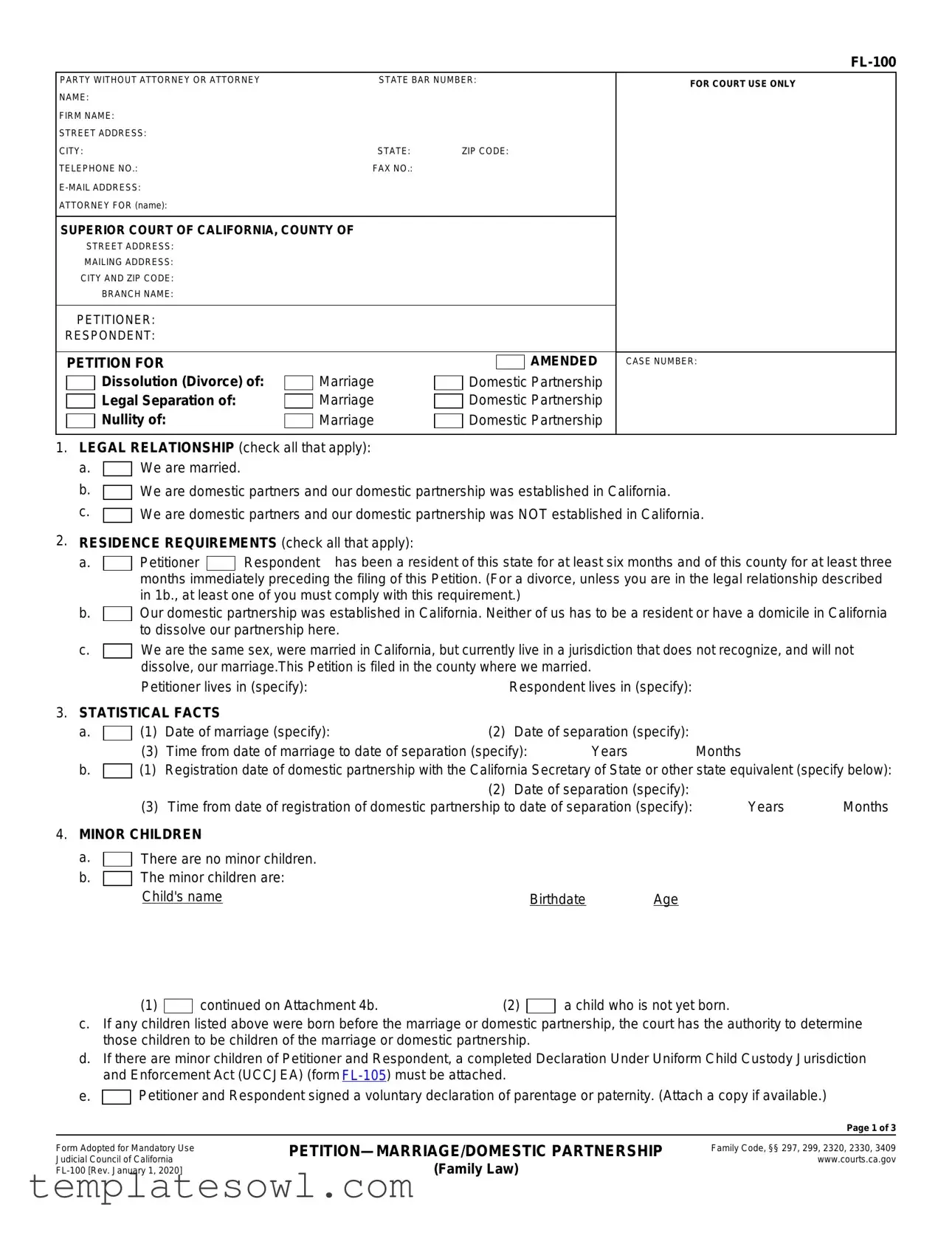What is the purpose of the LC 3437 12 form?
The LC 3437 12 form is used to formally petition the court for the dissolution or legal separation of a marriage or domestic partnership in California. It allows individuals to initiate legal proceedings and request orders related to child custody, support, and property division.
Who should file the LC 3437 12 form?
Either spouse or partner can file this form. The person who initiates the process is known as the petitioner, while the other partner is referred to as the respondent. It's essential for the petitioner to meet specific residency requirements outlined in the form.
What information is required on the LC 3437 12 form?
The form requires details about the petitioner and respondent, including names, addresses, and contact information. You'll also need to provide information about your legal relationship, the date of marriage or domestic partnership, and any minor children involved. Additionally, you'll indicate the specific legal grounds for your petition and any requests for support or custody.
What are the legal grounds for filing a petition using this form?
The legal grounds for filing can include irreconcilable differences or permanent legal incapacity to make decisions. For nullity, reasons could involve bigamy, incest, or situations affecting mental capacity. It's crucial to select the appropriate ground that applies to your situation.
Are there specific residency requirements for filing?
Yes, at least one party must have lived in California for the past six months and in the county where the petition is filed for the last three months. However, if your domestic partnership was established in California, neither partner is required to currently reside there to file for dissolution.
What happens if there are minor children involved?
If there are minor children, the form requires additional information about them. You must list their names and birthdates. If child custody issues arise, a completed Declaration Under Uniform Child Custody Jurisdiction and Enforcement Act must be attached, alongside any voluntary declarations of parentage, if available.
Can I request spousal support through this form?
Yes, you can request spousal support within this petition. You will indicate who should receive support, if any, and can also address whether to end the court’s ability to award support in the future. This area should be filled out based on your specific circumstances.
What should I do if I have separate property or debts?
If you have separate property or debts, you must state this in the form. You can confirm these assets and debts in a Property Declaration. If you are unsure, it’s advisable to gather information on all financial matters prior to filing.
Are there any restrictions or considerations related to rights after filing?
Yes, filing for dissolution may affect rights under wills, trusts, or benefits such as life insurance. It's important to review your financial documents and accounts following the filing. Changes might be necessary, and in some cases, the agreement of your partner or a court order may be required.


 We are married.
We are married.
 We are domestic partners and our domestic partnership was established in California.
We are domestic partners and our domestic partnership was established in California. Our domestic partnership was established in California. Neither of us has to be a resident or have a domicile in California to dissolve our partnership here.
Our domestic partnership was established in California. Neither of us has to be a resident or have a domicile in California to dissolve our partnership here. Petitioner and Respondent signed a voluntary declaration of parentage or paternity.
Petitioner and Respondent signed a voluntary declaration of parentage or paternity. 
 petitioner’s age at time of registration of domestic partnership or marriage.
petitioner’s age at time of registration of domestic partnership or marriage. prior existing marriage or domestic partnership.
prior existing marriage or domestic partnership. unsound mind.
unsound mind.
 form
form 



 Petitioner's former name be restored to
Petitioner's former name be restored to
 Other
Other